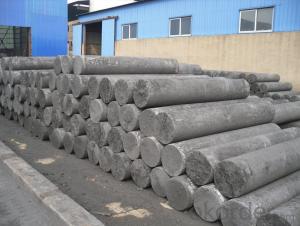It all started with a simple pencil lead, a seemingly insignificant piece of graphite that would pave the way for a revolution in the world of industry. The humble beginnings of graphite electrodes trace back to the curiosity of early scientists and inventors, who marveled at the properties of this soft, black mineral.
Graphite, a naturally occurring form of carbon, has been known to humans for centuries. Its uses have ranged from the mundane, like the pencil lead, to the extraordinary, like the electrodes that power electric arc furnaces. The journey of graphite electrodes from a simple writing tool to an essential component in modern industry is a fascinating one, filled with innovation, discovery, and a touch of serendipity.
In the early days, graphite was a prized possession, sought after for its ability to leave a mark on paper. It wasn’t until the 19th century that the true potential of graphite began to unfold. As the Industrial Revolution took hold, the demand for efficient and reliable power sources grew. It was during this time that the first electric arc furnaces were developed, and graphite electrodes found their place in the heart of these machines.
The electric arc furnace, or EAF, is a type of furnace that uses electric arcs to heat charged material and turn it into liquid form. It’s a process that’s been vital in the production of steel, an essential material in construction, infrastructure, and countless other industries. The role of graphite electrodes in this process is crucial. They conduct electricity, generating the intense heat necessary to melt the steel. Without them, the EAF would be nothing more than a hollow shell.
As the years went by, the use of graphite electrodes expanded beyond the steel industry. They found their way into various other applications, such as the production of silicon metal, the manufacture of refractory materials, and even the purification of chemicals. The versatility of graphite electrodes is a testament to the ingenuity of those who recognized their potential and worked to harness it for the betterment of society.
The production of graphite electrodes is a complex process that involves multiple stages. It starts with the selection of high-quality graphite ore, which is then processed to remove impurities. The purified graphite is then mixed with binders and other materials to create a paste. This paste is extruded into rods, which are then baked at high temperatures to form the final product. Each step of the process is carefully controlled to ensure the quality and performance of the electrodes.
One might wonder, what makes graphite electrodes so special? It’s their unique combination of properties that sets them apart. Graphite is an excellent conductor of electricity, which is essential for the operation of EAFs. It also has a high melting point, allowing it to withstand the extreme temperatures of industrial processes. Moreover, graphite is chemically stable and resistant to corrosion, making it a reliable choice for long-term use.
The story of graphite electrodes is not just about their technical achievements, but also about the people behind them. The engineers, scientists, and workers who have dedicated their lives to the development and refinement of this technology have played a pivotal role in its success. Their passion, creativity, and determination have turned a simple pencil lead into a powerhouse of industrial power.
As we look to the future, the demand for graphite electrodes is only expected to grow. With the world’s focus on sustainable energy and the need for cleaner, more efficient methods of production, graphite electrodes are poised to play a crucial role. Whether it’s in the development of electric vehicles, the advancement of renewable energy technologies, or the continued growth of the steel industry, the impact of graphite electrodes will be felt for generations to come.
So, the next time you pick up a pencil and marvel at the smoothness of the graphite lead, remember that it’s more than just a tool for writing or drawing. It’s a symbol of human ingenuity and the incredible potential that lies within the simplest of materials. The journey of graphite electrodes from a pencil lead to an industrial powerhouse is a story of innovation, perseverance, and the unyielding spirit of progress.

